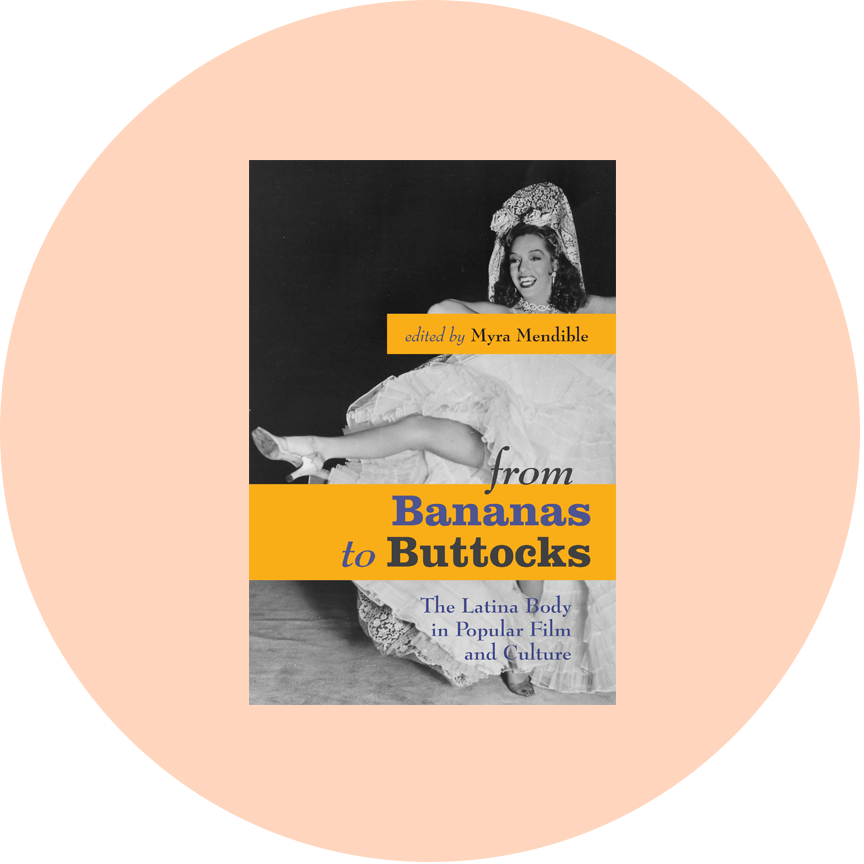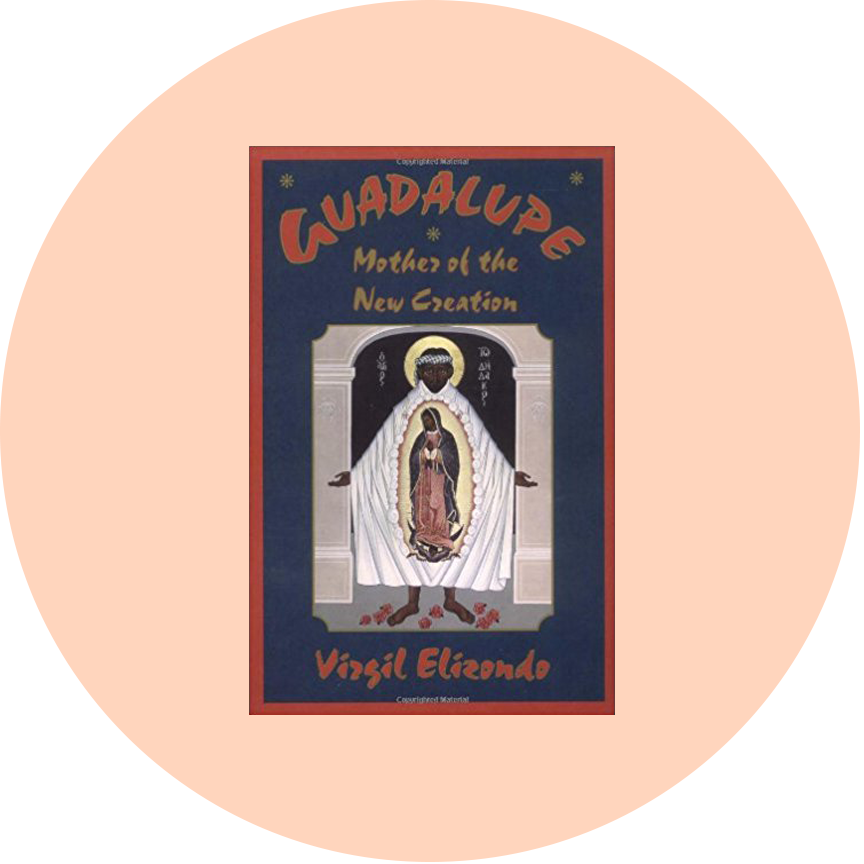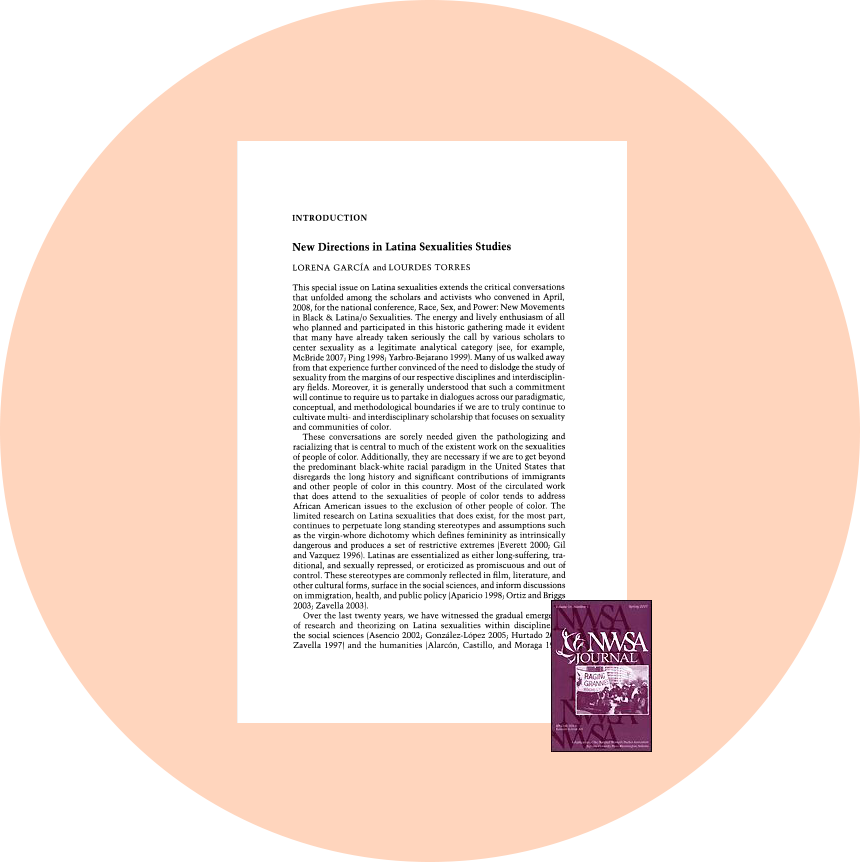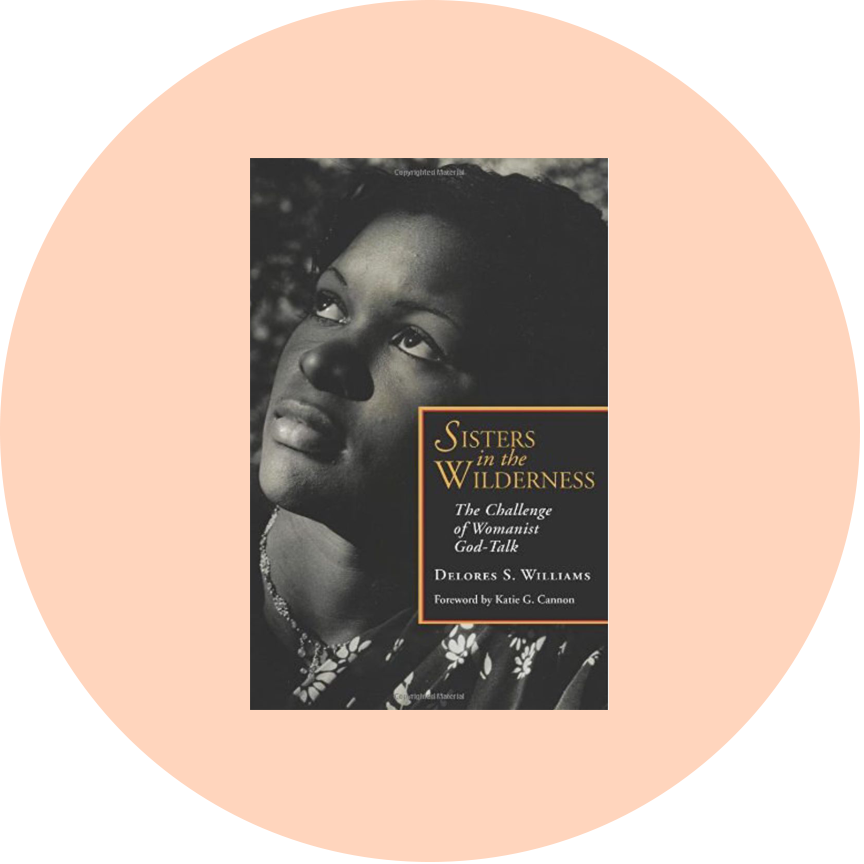My Ultimate Feminist Latinx Reading List
WORDS: PRISCA DORCAS MOJICA RODRIGUEZ | ART: FAYE ORLOVE
Academia has a reputation of being highly inaccessible.
Expecting people to reach these racist and structurally oppressive places in order to gain access to naming their own oppression is wrong. The bulk of my work is to take the veil off and make academia accessible to anyone who can pick up a book and read; to give people access to resources that will give them their freedom instead of keeping these resources for the few elites. I travel a lot and often times I am asked to recommend books. While I have done a few lists of book recommendations, they’ve been relatively short. Here is an extensive list of books I cherish and value in my own research and in my own work. Each book has been specially picked out for those of you interested in the intersection of race, religion, class, and gender as it relates to Latina-specific issues. Quotes from certain books are provided along with page numbers for those quotes. Also, some of these are chapters in anthologies, so I am writing this list in traditional bibliography citations, ranked from most readable to harder/theory-based literature. 1. Molina Gúzman, Isabel “Disorderly Bodies and Discourses of Latinidad in the Elían González Story”, pages 217-241 in From Bananas to Buttocks: The Latina Body in Popular Film and Culture (Austin, University of Texas Press, 2007)
2. Myra Mendible “Embodying Latinidad”, pages 1-27 in From Bananas to Buttocks: The Latina Body in Popular Film and Culture (Austin, University of Texas Press, 2007)
1. Molina Gúzman, Isabel “Disorderly Bodies and Discourses of Latinidad in the Elían González Story”, pages 217-241 in From Bananas to Buttocks: The Latina Body in Popular Film and Culture (Austin, University of Texas Press, 2007)
2. Myra Mendible “Embodying Latinidad”, pages 1-27 in From Bananas to Buttocks: The Latina Body in Popular Film and Culture (Austin, University of Texas Press, 2007)
“The term ‘Latinidad’ […] has understandably met resistance from many Chicano and Latino critics. They have questioned the usefulness and effect of such labeling, for example, its tendency to homogenize peoples whose histories, language usage, and circumstances may differ significantly or to alienate U.S.-born Latinos, who may not speak Spanish or share other identifying criteria.” – page 4
“President Franklin Delano Roosevelt’s administration turned what had been a dysfunctional relationship at best and a hostile one at worst into a love affair between compatible partners. During this period the United States romanticized its relationship with Latin America through the Latina star body. Both hoover and Roosevelt sought to improve Latin American relations, both Roosevelt’s Pan-American day speech in April of 1933 openly ‘repudiated the ‘erroneous interpretation’ of the Monroe Doctrine that justified US intervention, and extolled ‘the principle of consultation’ and the ‘promotion of commerce’ as the bases for improved hemispheric relations’ (Roorda, 1998, 88). Latin America emerged as an accommodating, inviting movie set, and the ‘South American girls’ Dolores del Río, Maria Móntez, Lupe Vélez, and Carmen Miranda enticed American audiences with their exoticism, eroticism, and impish charm. Thus by April 1945, eighty-four films featuring Latin American stars or locales had been produced.” – page 9
3. Molina Gúzman, Isabel “Salma Hayek’s Frida”, pages 115-128 in From Bananas to Buttocks: The Latina Body in Popular Film and Culture (Austin, University of Texas Press, 2007)“Within the U.S. popular culture, Latinas are marginalized through the racializing construction of their sexuality as hyper and as a result transgressed of the dominant social order (Molina Guzmán 2005; Ruiz 2002).” – page 118
 4. Elizondo, Virgilio, Guadalupe: Mother of the New Creation (New York: Orbis Books, 1997)
4. Elizondo, Virgilio, Guadalupe: Mother of the New Creation (New York: Orbis Books, 1997)
 5. Cisneros, Sandra, “Guadalupe the Sex Goddess,” pages in 46-51 in Goddess of the Americas: La Diosa de Las Americas (New York: Riverhead Books, 1996)
5. Cisneros, Sandra, “Guadalupe the Sex Goddess,” pages in 46-51 in Goddess of the Americas: La Diosa de Las Americas (New York: Riverhead Books, 1996)
“You could always tell us Latinas […] we were the ones who still used bulky sanitary pads instead of tampons, thinking ourselves morally superior to our white classmates.” – page 46
“In the guise of modesty, my culture locked me in a double chastity belt of ignorance and verguenza, shame.” – page 46
“Guadalupe’s pre-Colombian antecedents, before the Church desexed her, I found Tonantzin, and inside Tonantzin a pantheon of other mother goddesses. I discovered Tlazolteotl, the goddess of fertility and sex, also referred to as a Totzon. Our Beginnings, or Tzinteotl, goddess of the rump. Putas, nymphos, and other loose women were known as ‘women of the sex goddess.’ Tlazolteotl was the patron of sexual passion, and though she had the power to stir you to sin, she could also forgive you and cleanse you of your sexual transgressions via her priests who heard confession. In this aspect of confessor, Tlazolteotl was known as Tlaelcuani, the filth eater. Maybe you’ve seen her, she’s the one sold in the tourist market even now, a status of a woman squatting in childbirth, her grace grimacing in pain. Tlazolteotl, then, is a duality of maternity and sexuality. In other words, she is a sexy mama.” –page 49
6. Randall, Margaret “Guadalupe, Subversive Virgin” in Goddess of the Americas: La Diosa de Las Americas (New York: Riverhead Books, 1996)“In Nicaragua, during the decade of the Sandinista government, the Virgin also took on trappings of struggle and working-class identification. She became a warrior like no other. Nicaragua, just like Mexico and most of the Latin American nations, has a rich Marianist culture. Doña Violeta de Chamorro took full and deliberate advantage of this during her 1990 electoral campaign. She frequently dressed in light blue and white, the traditional colors of the Virgin. In a society seeped in Marianistic culture, her stance, body language, gestures, and discourse were all calculated to simulate that of the Holy Mother of a suffering people.” – page 121
7. Anzaldua, Gloria, “Coatlalopeuh: She Who Has Dominion Over Serpent,” pages 52-55 in Goddess of the Americas: La Diosa de Las Americas (New York: Riverhead Books, 1996)“In 1660 the Roman Catholic Church named Guadalupe Mother of God, considering her synonymous with la Virgen María, she became la Santa Patrona de Los Mexicanos.” – page 53
“Today, in Texas and Mexico, she is more venerated than Jesus or God the Father.” –page 53
“Today, la Virgen de Guadalupe is the single most potent religious political and cultural image of the Chicano/Mexicano.” – page 53
“La Cultura Chicana identifies with the mother (Indian) rather than with the father (Spanish).” – page 54
“Guadalupe is the symbol of our rebellion against the rich upper and middle class; against their subjugation of the poor and the indio.” – page 54
 8. bell hooks and Amalia Mesa-Bains, Homegrown: Engaged Cultural Criticism (Cambridge: South End Press, 2006)
8. bell hooks and Amalia Mesa-Bains, Homegrown: Engaged Cultural Criticism (Cambridge: South End Press, 2006)
“we must be careful when we critique another person of color” – page 56
 9. Campese, Gioacchino “¿Cuanto Mas? The Crucified People of the U.S. Mexico Border” pages 271-298 in A Promised Land a Perilous Journey: Theological Perspective on Migration (Notre Dame: University of Notre Dame Press, 2008)
9. Campese, Gioacchino “¿Cuanto Mas? The Crucified People of the U.S. Mexico Border” pages 271-298 in A Promised Land a Perilous Journey: Theological Perspective on Migration (Notre Dame: University of Notre Dame Press, 2008)
 10. Aquino, María Pilar Our Cry for Life: Feminist Theology from Latin America (New York: Orbis Books, 1993)
10. Aquino, María Pilar Our Cry for Life: Feminist Theology from Latin America (New York: Orbis Books, 1993)
“Discrimination against women has a long tradition in society and the church, for women in Latin America and the Caribbean it reached violent dimensions through the conquest.” – page 13
“Women’s sexual identity becomes the object of repression, guilt, and sacrifice rather than a source of human fulfillment.” – page 97
 11. Davila, Arlene, Latinos Inc: The Marketing and the Making of a People. (Berkley and Los Angeles: University of California Press, 2001)
11. Davila, Arlene, Latinos Inc: The Marketing and the Making of a People. (Berkley and Los Angeles: University of California Press, 2001)
 12. Bettie, Julie, Women without Class: Girls, Race, and Identity. (Berkeley: University of California Press, 2004)
12. Bettie, Julie, Women without Class: Girls, Race, and Identity. (Berkeley: University of California Press, 2004)
“Nonetheless, cholas/os, like pachucas and pachucos a generation before them, are – often wrongly – assumed to be engaged in criminal behavior.” – page 14
“There are two groupings of cholas/os, which represented two gangs affiliations: sureños and norteños. The sureños tended to be immigrant students who primarily spoke Spanish, while the norteños tended to be second-generation Mexican-Americans whose primary language at school was English. Consequently, there was a pattern of class difference” – page 14
“historic and contemporary race and class meanings associated with active sexuality among girls and women and how the label ‘bad girl’ is applied differentially across race and class lines and with varying effects.” – page 37
“’girl culture’ among working-class girls – focused on fashion, beauty, and heterosexual romance – and patterns of ‘quite non-cooperation,’ ‘gentle undermining,’ ‘subtle redefinition,’ ‘immersion in private concerns,’ ‘tactics of silence,’ and expressions of ‘unambiguous boredom’ in the classroom all work as forms of resistance that girls employ to reject official school activities and, by association, middle-class cultural norms” – page 47
“The association of light with prep girls and dark with non-prep girls may be arbitrary, but the association of pastels with ‘youth, innocence, and gaiety’ and darker colors with ‘somberness, age, and sophistication’ does happen to coincide with middle- and working-class life stage trajectories (Eckert 1989, 50)” – page 62
 13. Hernandez, Jillian “Miss You Look Like a Bratz Doll: On Chonga Girls and Sexual Aesthetic Excess” in New Directions in Latina Sexualities Studies Volume 21, Number 3, Fall (The John Hopkins University Press, 2009).
13. Hernandez, Jillian “Miss You Look Like a Bratz Doll: On Chonga Girls and Sexual Aesthetic Excess” in New Directions in Latina Sexualities Studies Volume 21, Number 3, Fall (The John Hopkins University Press, 2009).
 14. Gaspar de Alba, Velvet Barrios: Popular Culture and Chicana/o Sexualities. (New York: Palgrave Macmillian, 2003).
14. Gaspar de Alba, Velvet Barrios: Popular Culture and Chicana/o Sexualities. (New York: Palgrave Macmillian, 2003).
 15. Enloe, Cynthia, Bananas, Beaches, and Bases: Making Feminist Sense of International Politics. (Berkeley and Los Angeles: University of California Press, 2000).
15. Enloe, Cynthia, Bananas, Beaches, and Bases: Making Feminist Sense of International Politics. (Berkeley and Los Angeles: University of California Press, 2000).
“Carmen Miranda […] a Brazilian grocer’s daughter who became a Hollywood star and the symbol of an American president’s Latin American policy.” – xvii
“In the 1930s Hollywood moguls turned Brazilian singer Carmen Miranda into an American movie star. They were trying to aid President Franklin Roosevelt’s efforts to promote friendlier relations between the US and Latin America.” – page 2
“Miranda personified a culture full of zest and charm, unclouded by intense emotion or political ambivalence.” – page 127
 16. Valdivia, A.N. “A Latina in the Land of Hollywood” and other Essays on Media Culture (Tucson: University of Arizona Press, 2000)
16. Valdivia, A.N. “A Latina in the Land of Hollywood” and other Essays on Media Culture (Tucson: University of Arizona Press, 2000)
 17. Rodriguez, Clara E. Latin Looks: Images of Latinas and Latinos in the US Media. (Boulder, CO: Westview Press, 1997)
17. Rodriguez, Clara E. Latin Looks: Images of Latinas and Latinos in the US Media. (Boulder, CO: Westview Press, 1997)
 18. Stepick, A. G. Grenier, M. Castro, and M. Dunn, This Land is Our Land: Immigrants and Power in Miami (Berkeley and Los Angeles: University of California Press, 2003)
18. Stepick, A. G. Grenier, M. Castro, and M. Dunn, This Land is Our Land: Immigrants and Power in Miami (Berkeley and Los Angeles: University of California Press, 2003)
“Miami […] the northern capital of Latin America.” – page 10
“White American business leaders expressed frustration and confusion that Cubans and other Latinos could succeed without really learning English or joining mainstream American business and civic organizations.” – page 10
“The fact that immigrants succeed economically does not mean that Americans will accept them.” – page 19
 19. Pineda-Madrid, Nancy “Latina Theologies” page 60-85 in Liberation Theologies in the United States (New York: New York University Press, 2010)
19. Pineda-Madrid, Nancy “Latina Theologies” page 60-85 in Liberation Theologies in the United States (New York: New York University Press, 2010)
 20. Althaus-Reid, Marcell, From Feminist Theology to Indecent Theology. (London: SCM Press, 2004)
20. Althaus-Reid, Marcell, From Feminist Theology to Indecent Theology. (London: SCM Press, 2004)
“what has sexuality to do with Feminist Liberation Theology? The answer is simple: everything.” – page 4
“(an Indecent Theology) as a positive theology which aims to uncover, unmask, and unclothe that false hermeneutics which considers itself as decent and, as such, proper and befitting for women especially in sexual matters.” – page 83
“Theologically decent women of my generation have been ignorant of sexual matters, including menstruation and lack of knowledge of their own bodies’ physiology. That ignorance was considered ‘decent.’ Perhaps putas masturbate and know their bodies, but not decent women. The discovery of a woman’s own body is a lengthy and difficult process, full of guilt and religious pressures.” – page 91
 21. Foucault, Michel, Discipline and Punish: The Birth of the Prison (New York: Vintage, 1977)
21. Foucault, Michel, Discipline and Punish: The Birth of the Prison (New York: Vintage, 1977)
 22. Bordo, Susan “The Body and the Reproduction of Femininity” pages 90-110 in Writing on the Body: Female Embodiment and Feminist Theory, ed. Katie Conboy, Nadia Media, and Sarah Stanbury (New York: Colombia University Press, 1997)
22. Bordo, Susan “The Body and the Reproduction of Femininity” pages 90-110 in Writing on the Body: Female Embodiment and Feminist Theory, ed. Katie Conboy, Nadia Media, and Sarah Stanbury (New York: Colombia University Press, 1997)
“woman is not born, but made.” – page 2
“by the eighteenth century, the sexuality of the black, both male and female become an icon for deviant sexuality” – page 4
 23. Hebdige, Dick Subculture: Meaning of Style (Florence: Routledge, 1979)
23. Hebdige, Dick Subculture: Meaning of Style (Florence: Routledge, 1979)
 24. Isasi-Díaz, Ada María, En La Lucha: Elaborating a Mujerista Theology (Minneapolis: Fortress Press, 2004)
24. Isasi-Díaz, Ada María, En La Lucha: Elaborating a Mujerista Theology (Minneapolis: Fortress Press, 2004)
“Survival for middle-class Hispanic Women is related to the difficult task of living in a culture that is not our own it comes down to repeatedly to choosing between faithfulness to self or, at the risk of losing cultural values and identify, adopting the values and behavior of the dominant culture in order to maintain our status, to survive” – page 43
 25. Isasi-Díaz, Ada María, Mujerista Theology (New York: Orbis Books, 1996)
25. Isasi-Díaz, Ada María, Mujerista Theology (New York: Orbis Books, 1996)
“the goals of mujerista theology have always been these: to provide a platform for the voices of Latina grassroots women; to develop a theological method that takes seriously the religious understandings and practices of Latinas as a source for doing theology; to challenge the theological understand, church teachings, and religious practices that oppress Latina women, that are not life-giving, and, therefore, cannot be theologically correct” – page 1
 26. Williams, Delores S. Sisters in the Wilderness: The Challenge of Womanist God-Talk. (New York: Orbis Books, 1993)
26. Williams, Delores S. Sisters in the Wilderness: The Challenge of Womanist God-Talk. (New York: Orbis Books, 1993)
“Subduing [the Native Americans] fed the Englishmen’s sense of national superiority since they perceived Native Americans as grouped in “nations” occupying and controlling specific land masses in America. To take their land and diminish their numbers illustrated to Christian men from the nation of England that they were superior to what they viewed as savage nations in the American wilderness. Furthermore, in subduing the Native American nations they saw a challenge to subduing nature, which the Bible reported that God gave man – that is, Christian man – dominion over.” – page 89

